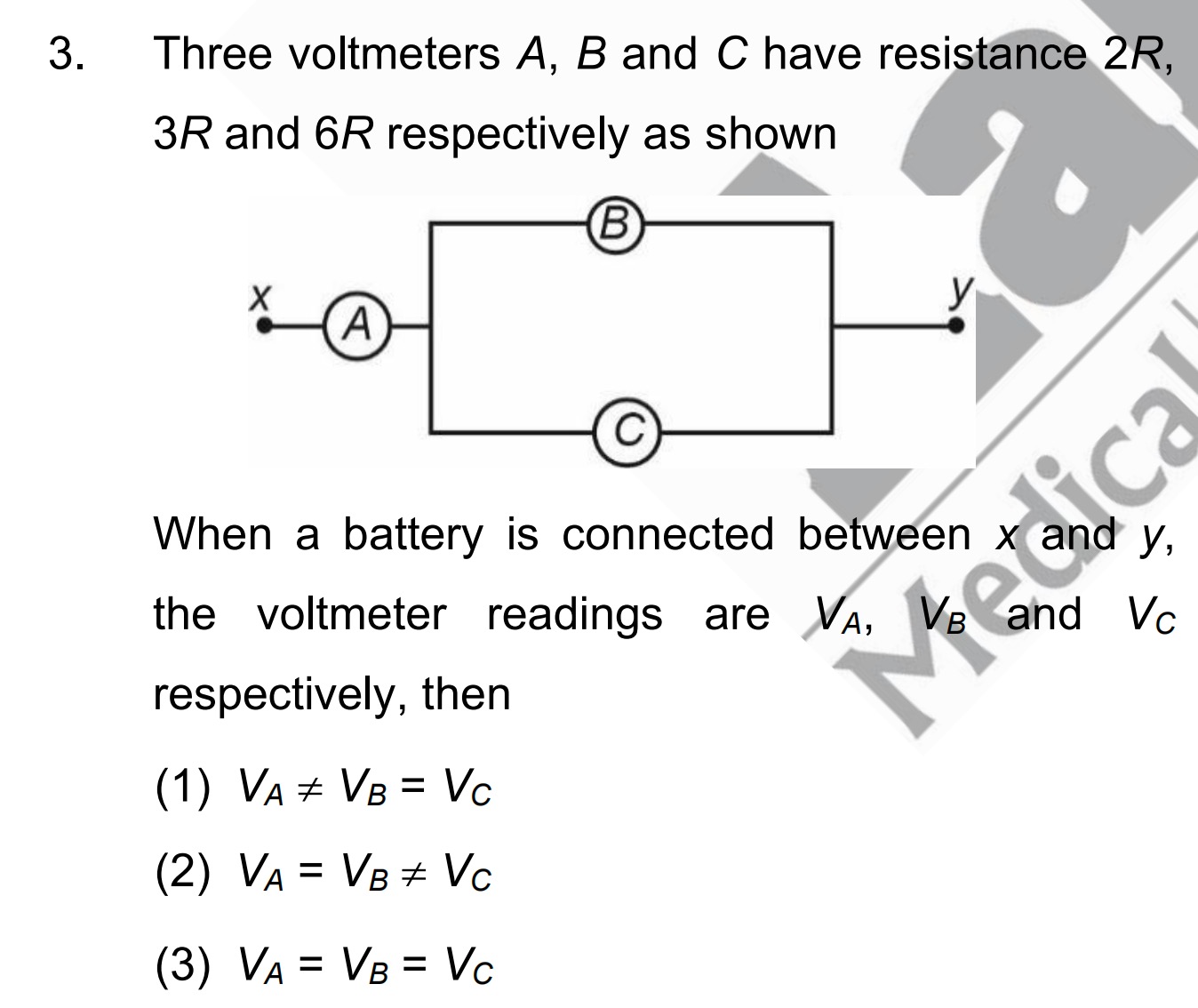Question
Question: Three voltmeters $A$, $B$ and $C$ have resistance $2R$, $3R$ and $6R$ respectively as shown When a ...
Three voltmeters A, B and C have resistance 2R, 3R and 6R respectively as shown
When a battery is connected between x and y, the voltmeter readings are VA, VB and VC respectively, then

VA=VB=VC
VA=VB=VC
VA=VB=VC
VA=VB=VC
Solution
We start by redrawing the circuit.
Voltmeter B (3R) and Voltmeter C (6R) are in parallel, so the effective resistance is:
Rparallel=3R+6R3R×6R=9R18R2=2R
Voltmeter A (2R) is in series with the parallel combination (2R):
Rtotal=2R+2R=4R
Let the battery voltage be V.
- The total current:
I=4RV
- Voltage drop across Voltmeter A:
VA=I×2R=4RV×2R=2V
- Voltage drop across the parallel branch, which is the reading for both B and C:
VB=VC=2V
Thus, we have:
VA=VB=VC
The parallel combination of voltmeters B (3R) and C (6R) gives an equivalent resistance of 2R. When connected in series with voltmeter A (2R), the circuit becomes two equal resistances. Therefore, by voltage division, each voltmeter shows half of the battery voltage.
